Children's toilet seats: types and choices
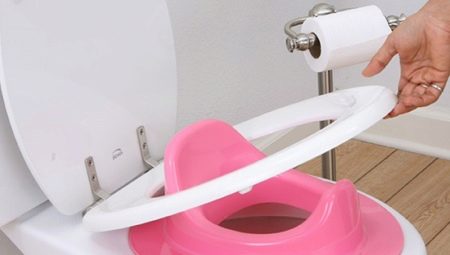
Families in which a baby is growing up are faced with the need to transfer him from using a potty to an adult toilet as soon as possible and inconspicuously. The choice of modern devices for these purposes is sufficient to make the transition as comfortable as possible for the child.
Peculiarities
There are 2 ways to teach your toddler to use adult plumbing: install a children's toilet or purchase a toilet seat or lid with an insert, insert on the standard model. The first one is quite costly and unpopular. It can be afforded by wealthy people who have a spacious toilet room in a private house. This method implies a full-fledged installation of real children's plumbing with all the ensuing problems - connecting the sewerage and water supply.
Installing a mini-toilet is not rational, as children grow up quickly and very soon they will need regular plumbing. The upcoming dismantling will not only require additional funds, but will also disrupt the aesthetics of the premises.

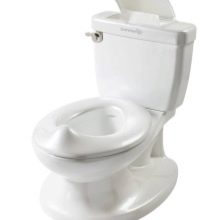
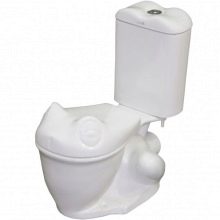
The second method is more reasonable, it is temporary and does not violate the integrity of the room... We are talking about special devices that are installed on the toilet. For each specific child, you can choose the right pad or add-on. They all have the following features.
- They are easy to install on the toilet and simply remove when an adult needs the plumbing. The ease of installation is obvious, they do not need to be connected to sewerage and water supply.
- The devices are completely safe, they are made from non-toxic materials.The designs themselves undergo special checks before being allowed for mass production. Therefore, there is no need to fear that the child will pinch a finger, slide down or loosen the superstructure.
- The cost-effectiveness of a temporary fixture is obvious, it makes no sense even to compare its installation with the cost of a full-fledged plumbing.
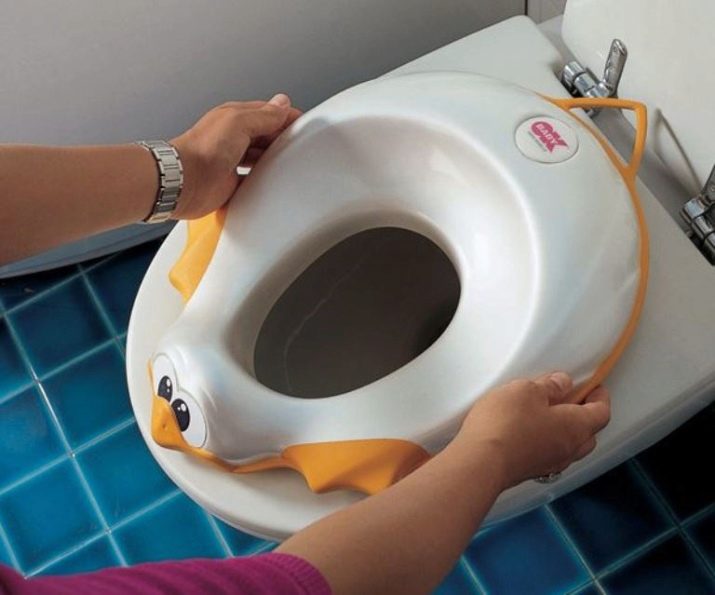
The cost of add-ons and linings depends on the complexity of the structure, material, accessories and brand. For example, you can choose a model of a simple lining on the surface of the toilet bowl or a complicated design with a ladder and railings.
Varieties
There are different types of fixtures for children, combined with plumbing fixtures for adults. They are chosen based on the age of the baby, his mobility and feeling of comfort.
Traditional child seat
It looks as simple as possible, repeats the shape of the circle of an adult toilet and is attached above or below it. The first installation option is more hygienic, especially for large families. The linings are made of hard plastic or in a soft version - sheathed with foam rubber and oilcloth. There are also soft rubberized seats.
It is more convenient to purchase a cover for a 2-in-1 toilet, where a child's and an adult's circle, plus the lid itself, are fastened together.
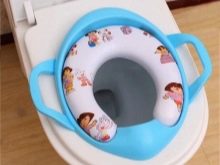
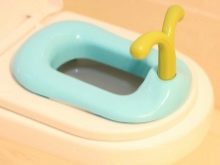
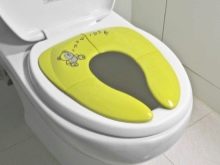
Anatomical toilet seat
Developed by specialists taking into account the child's anatomy. It is not just a circle, but also has certain protrusions in the front and back of the structure, which help the child to sit more tightly on the pad and feel safe. The rubberized material washes well and does not slip on the surface of the toilet bowl. The product is attached to any toilet model with special clamps.
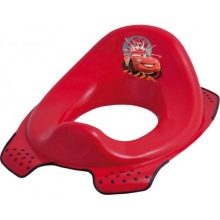
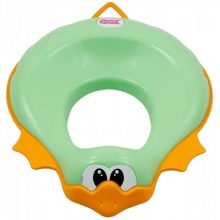
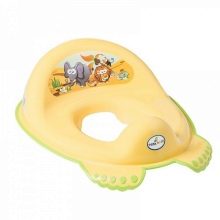
Attachment seat
Attachment for the smallest and those kids who love comfort... They will be able to climb onto the toilet using a ladder and sit on it, as if on a throne, resting on the backrest and handrails. The seat is fixed to the steps with rubber feet on the legs, which ensures the safety of the child, in contrast to the separately attached ladder, which can move on slippery tiles.
All stages of the attachment are adjusted taking into account the child's height and are installed as it is convenient for him to put his legs. The design is lightweight, and the child himself can move it to the toilet or sink to brush his teeth. For the period when it is not needed, it is pushed aside or folded.
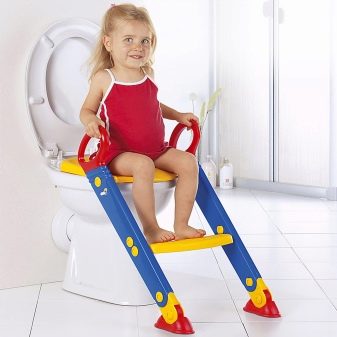
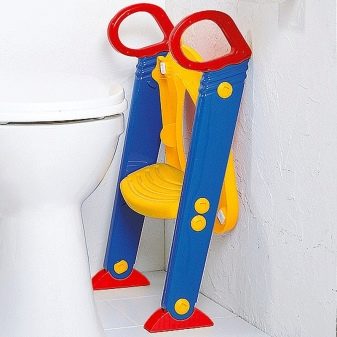
Child road seat
The parents of the baby take such options with them on a trip, so that, being outside the house, he would feel as comfortable as in his own walls. In addition, the road seat ensures hygienic use, the child does not have to use the shared toilet.
Some models are equipped with a special container of water and disinfectant that allows you to wash the seat simply by shaking it.
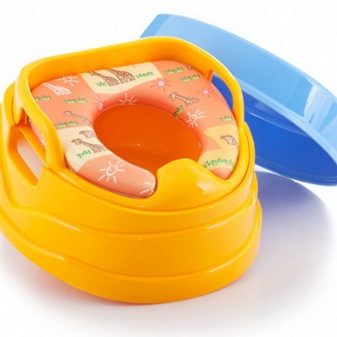
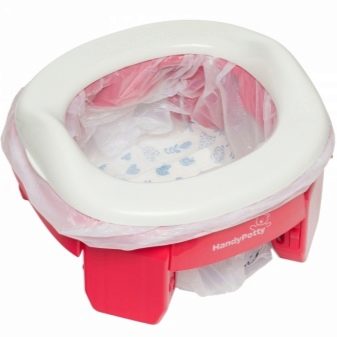
Manufacturing materials
For the baby to be comfortable and safe in contact with the seat, it must be warm, soft, non-slip. It is important that the material from which the product is made does not have toxic compounds. The toilet seat is available in the following materials.
Plastic (polypropylene, polyethylene and polyvinyl chloride)
Modern lightweight material, has a different structure and rich color palette. You can always please the baby by choosing his favorite color. Today it is the most common material for child seats. Often, for convenience, they are covered with foam rubber, and then with oilcloth or rubberized fabric. Unfortunately, the soft coating does not last long; over time, it is pressed through, rubbed and torn. Pets help speed up the process, if any, they gnaw a soft circle or sharpen their claws on it.
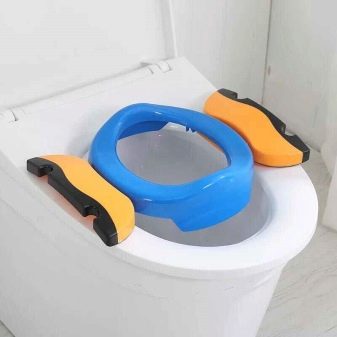
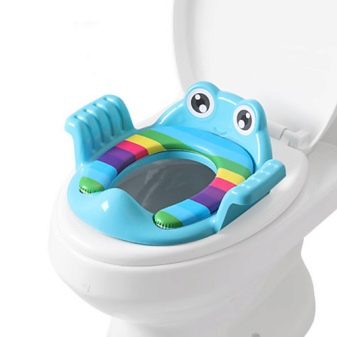
Duroplast
The popularity of this material is second only to plastic. In appearance and other characteristics it has many similarities to ceramics. This is an excellent material for using the toilet, as it does not absorb water and odors, it is easy to clean, it reacts well to ultraviolet light and aggressive chemicals. At the production stage, special components are introduced into the composition of duroplast, which suppress fungi and bacteria, so that these troubles are definitely not threatening the child's toilet seat.

Wood, plywood, chipboard, MDF
In everyday life, such options are rare. In most cases, they refer to older releases. Such material as wood is strong and durable and can serve for many generations of children. Sometimes craftsmen make their own devices for their children, using plywood, foam rubber and oilcloth. Wood is an environmentally friendly and warm material, but kids prefer brighter products.
If the wood is not treated with a soft material, it is hard and uncomfortable to sit on it.
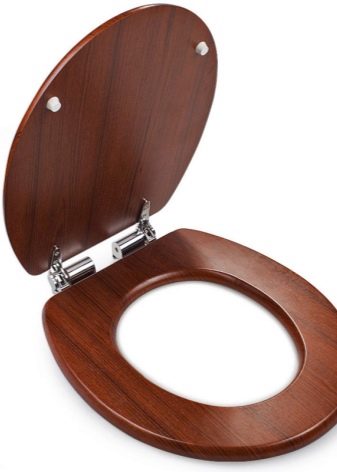
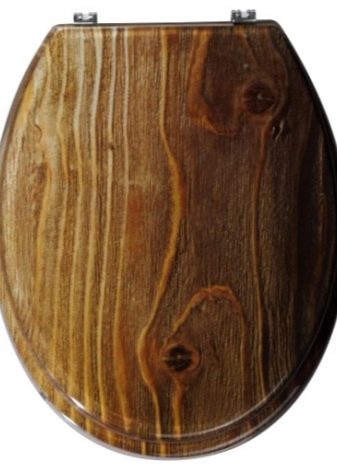
Textile
The textile is beautiful, soft and pleasant to the touch, it is comfortable to use, but the pad will have to be constantly washed, and it will last no more than a year.

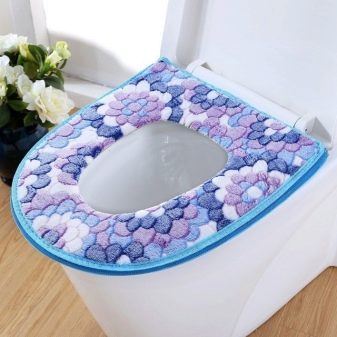
How to choose?
There are many criteria to choose a child toilet seat. The age and preferences of the baby are important. If a child is 4-5 years old, he is unpretentious, brought up "in a Spartan" way, a hard pad on an adult circle for a toilet bowl is suitable for him. It is inexpensive, easy to clean using household chemicals, does not break or deform, unlike products with foam rubber.
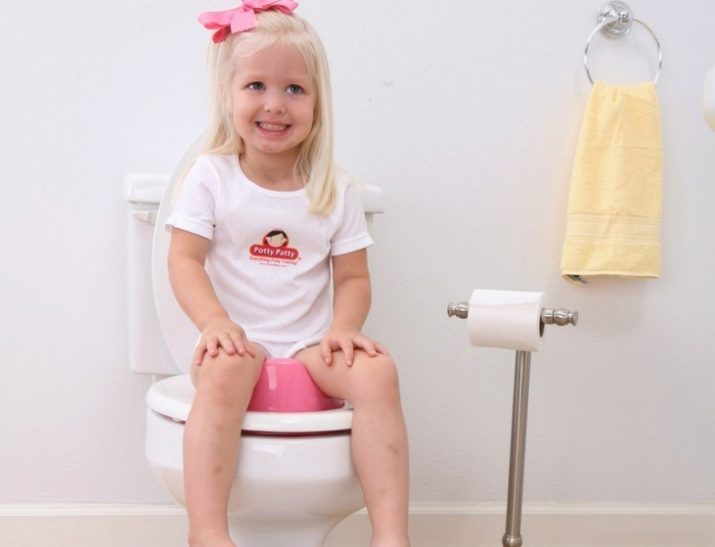
A very small person will need a ladder to climb onto an adult toilet. In this case, it is better to choose an attachment seat. Rubber pads give it rigidity and prevent slipping. The kid can sit comfortably and put his feet on the top step.
Small or capricious children need comfort, otherwise they will not want to part with their pot for a long time.
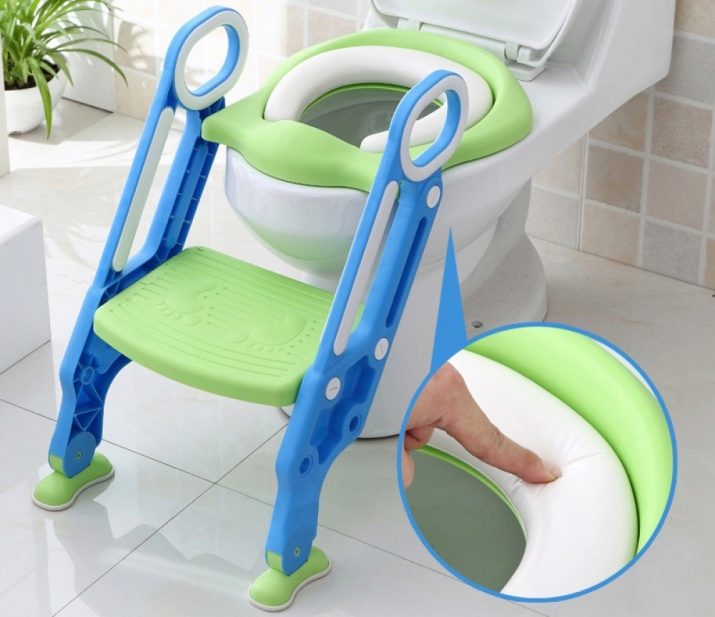
Young active parents spending their free time outside the home should pay attention to the road seat... The foldable product will not take up much space and will provide the usual comfort for the baby. In some cases, it is better to use the anatomical shape of the onlays, especially if you are choosing a product for a boy who is still too early to use the urinal while standing. Smooth protrusions will help to seat the child more tightly and avoid the mishandling that sometimes happens to boys.
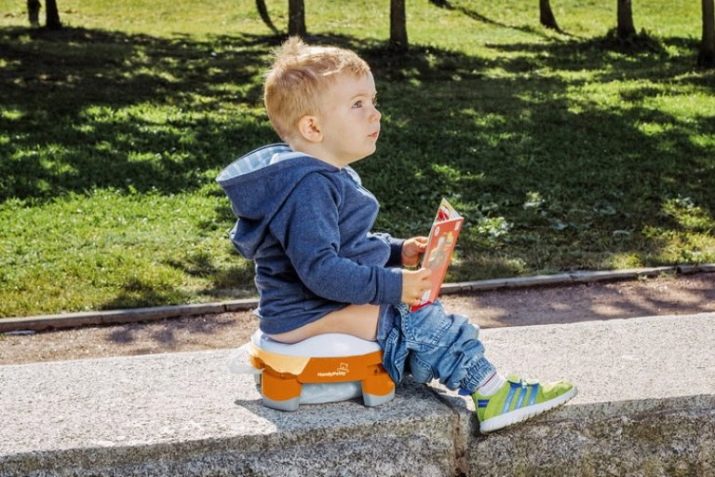
When everything becomes clear with the choice of a model, they pay attention to other points.
- You should not buy expensive seats with additional options for a restless toddler. He will be carried away by the opportunities provided and will forget about the very process for which he went to the toilet.
- Unpretentious children with rapid development generally do without special devices. For a short transitional period, they make good use of disposable pads.
- As for the degree of rigidity of the devices, most parents prefer to buy semi-rigid options for their babies, but hard plastic circles are more durable during frequent use.
- It is important to correctly calculate the size of the lining. To do this, you can make a template for the surface of the toilet and go shopping with it. The overlay should protrude at least one centimeter beyond the boundaries of the adult circle. Models with adjustable sizes are available to suit any plumbing fixture.
- Attention is drawn to the reliability of the retainers, as well as the ease and speed of installation of the seat. If the child wants to use the toilet, it is better not to delay with this process.
- The installed structure should sit tightly and not contain a gap between the seat and the toilet, by sticking his fingers into it, the child can pinch them.
- It is better to choose a pad with a rubber base, it will not fidget along the connecting surface.
- You can pay attention to the model's handles or an additional loop that allows you to store the cover in the washroom.
- When buying a seat, you need to carefully inspect the product, check the integrity of its coatings, as chips and scratches will collect dirt and eventually turn into a breeding ground for bacteria.
- Parents should be alerted to the pungent smell of plastic; you can ask the seller for a certificate of the goods to study the composition of the material. Toxic compounds in a children's product are unacceptable.
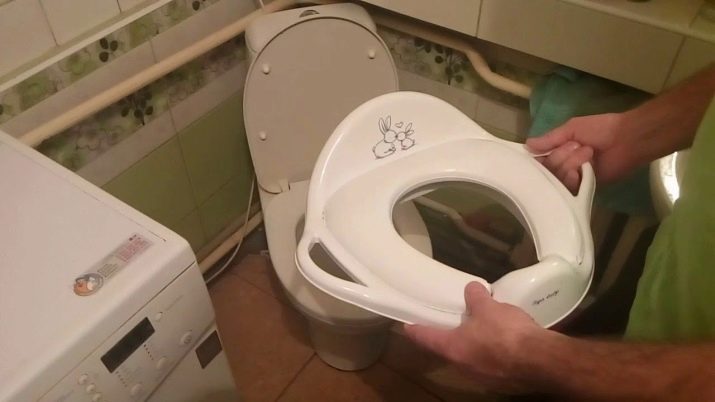
Nobody knows better than the child's parents, only they will be able to understand which seat is suitable for a child with a certain character and requirements, taking into account his age. And the industry provides enough choice to please even the most demanding consumer.
For information on how to choose a children's toilet seat cover, see the next video.








